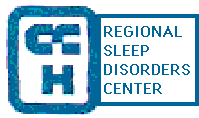Insomnia and Other Sleep Disorders.
THE SLEEP SITE
SLEEP
APNEA: ASSOCIATED CONDITIONS AND COMPLICATIONS- [1] |
-PULMONARY HYPERTENSION--particularly if hypoxemia persists in wakefulness. -AN UP TO 23-FOLD INCREASED RISK OF MYOCARDIAL INFARCTION. -ACCELERATED CORONARY ATHEROGENESIS. -CONGESTIVE AND RIGHT-SIDED HEART FAILURE. -SLEEP-RELATED CARDIAC DYSRHYTHMIAS. Some patients will demonstrate profuse ventricular ectopy with runs of ventricular tachycardia, probably in part secondary to both hypoxemia and increased catecholamine release. Others demonstrate cyclic bradycardia or asystoles: the consequence of increased vagal tone induced during inspiratory efforts against a collapsed upper airway (Muller maneuver). It should be noted that increased vagal tone in rapid eye movement (REM) sleep,even in the absence of any sleep apnea, can induce asystoles in some susceptible individuals. One common cause for referrals to a sleep disorders center is the simple question, "Does this patient need a pacemaker--or instead, just treatment for sleep apnea?" It was this phenomenon that caused Waxman to experience asystoles--which may have been occurring to a less dramatic degree without sequelae prior to administration of drugs that in his particular case, were simply too sedating for him to tolerate. -STROKE. In three studies, sleep apnea was documented in over 70% of male stroke victims. -HEADACHES ON AWAKENING: which in part have been linked to cyclic swings in cerebrospinal fluid pressure during repetitive struggling to overcome upper airway obstruction. -SLEEP-RELATED CONVULSIONS--secondary to cardiac dysrhythmias, cerebral hypoxia or both. -NOCTURIA AND ENURESIS--in part due to an increased release of atrial natiuretic peptide during sleep. -SLEEPWALKING AND VIOLENT BEHAVIORS DURING SLEEP: both with risk of injury to self and others. -EXCESSIVE SLEEPINESS, WITH CONSEQUENT SLEEP ATTACKS AND AUTOMATIC BEHAVIOR (the patient carrying out activities 'in a fog', without recall of events thereafter). The latter phenomenon explains why Waxman's head was up and his eyes open when he struck and killed the other motorist. -AN UP TO TWELVE-FOLD INCREASED RATE OF MOTOR VEHICLE CRASHES (typically occurring at high speed, due to occurrence during monotonous freeway driving and the patient's typical inability to sense impending sleep). It is for this reason that state troopers look for an absence of skid marks when determining whether a wreck resulted from sleep--an indication that there was no attempt to brake. -INDUSTRIAL ACCIDENTS AND INJURIES: particularly in workers utilizing heavy equipment or similarly hazardous materials while in an impaired state. -IRRITABILITY, PERSONALITY CHANGES AND DEPRESSION. -MEMORY LOSS AND COGNITIVE DYSFUNCTION. -IMPOTENCE. -AGGRAVATION OF SLEEP-RELATED GASTROESOPHAGEAL REFLUX: of itself potentially dangerous, due to attendant risk of aspiration and Barrett's esophagus in severe cases. -AND EVEN IN SOME SEVERE CASES, NO SYMPTOMS AT ALL! There are patients with well over 100 apneas per hour and with intense lack of oxygen in sleep who are completely asymptomatic: despite their high ongoing risk of potentially irreversible cardiovascular and cerebrovascular sequelae. |
THE SLEEPSITE NAVIGATOR MENU
INFORMATION ON SPECIFIC SLEEP DISORDERS |
INFORMATION
FOR PATIENTS, |
INFORMATION FOR OTHERS: AND FOR MORE INFORMATION:
|
||||||||||||||||||


COLUMBUS COMMUNITY HEALTH
REGIONAL SLEEP DISORDERS CENTER
Accredited by the American Academy
of Sleep Medicine.
Robert W. Clark, M.D., Medical Director
1430 South High Street
Columbus OH 43207
Tel: [614] 443-7800
Fax: [614] 443-6960
© Copyright 2006 Robert W. Clark M.D. Inc.